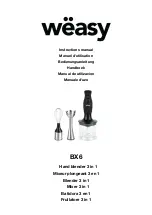
Bit, Byte, Word and String Addressing
4-44
Table 4–38. Class 9c Instruction Description
C9c
Mnemonic
Description
0
MOV APn, imm6
Load the accumulator pointer (AP) with a 5-bit constant.
1
ADD APn, imm5
Add a 5-bit constant imm5 to the referenced accumulator pointer(AP).
Table 4–39. Class 9d Instruction Description
C9d
Mnemonic
Description
0 0 0 0 BEGLOOP
Marks the beginning of loop. Queue interrupts and pushes the next PC value onto a
temporary stack location.
0 0 0 1 ENDLOOP n If R4 is not negative, pops the temporary stack value back on the PC and decrements
R4 by n. If R4 is negative, the instruction is a NOP and execution will exit the loop. n is
either 1 or 2
0 0 1 0 IDLE
Stops processor clocks. Device enters low power mode waiting on an interrupt to
restart the clocks and execution.
1 0 0 0 INTE
Sets IM bit in status register to a 1, thus enabling interrupts.
1 0 0 1 INTD
Sets IM bit in status register to a 0, thus disabling interrupts.
1 0 1 0 SXM
Sets XM in status register to 1 enabling sign extension mode.
1 0 1 1 RXM
Sets XM in status register to 0, disabling sign extension mode.
1 1 0 0 SFM
Sets FM in status register to 1, enabling multiplier shift mode for signed fractional
arithmetic.
1 1 0 1 RFM
Sets FM in status register to 0, enabling multiplier shift mode for unsigned fractional
or integer arithmetic.
1 1 1 0 SOVM
Set OM bit in status register to 1, enabling ALU saturation output (DSP mode).
1 1 1 1 ROVM
Set OM bit in status register to 0, disabling the saturating ALU operation (normal
mode).
4.5
Bit, Byte, Word and String Addressing
The MSP50P614/MSP50C614 has instructions which address bits, bytes,
words and strings in data memory or program memory. Data memory is always
accessed in bytes by the hardware, but is based on the instruction. The data
memory location is treated as a byte, word, or flag address. There are five
different kinds of addresses: byte addresses, byte-string addresses, word
addresses, word-string addresses, and flag addresses. Each type of address
is described below. Refer to Figure 4–3 and Table 4–40 for reference.
Byte and byte string address: Byte addressing is used to access individual
bytes with an instruction in byte mode. Such instructions have a suffix, B, at
the end of instruction name (for example, ADDB, MOVB, etc.). A byte string
Summary of Contents for MSP50C6xx
Page 6: ...vi...
Page 14: ...xiv...
Page 24: ...1 10...
Page 296: ...Instruction Set Summay 4 210 Assembly Language Instructions...
Page 366: ...6 12...
















































